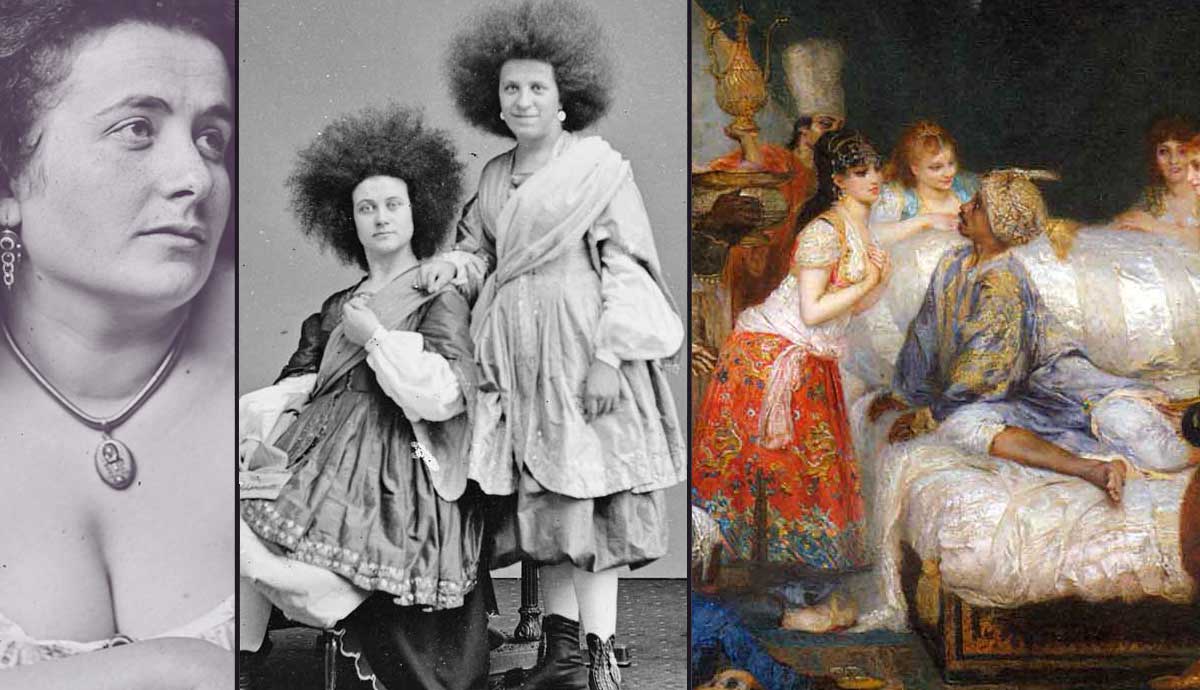Man, trying to pin down the real story behind Barnum’s famous Circassian Beauties was a mess. You read all this stuff online about their “exotic” origins and their incredible hair, but none of it ever hangs together. It smells like pure BS, and I decided I had to peel back the layers and see what was actually going on. This wasn’t just a quick Google search; I spent a solid three weeks running down dusty newspaper archives and trying to track down real performance records and later-life interviews.
The Initial Grind: Mapping Out Barnum’s Standard Lie
I started by just mapping out Barnum’s standard pitch. He ran these women throughout the 1860s and 70s. The story was always the same: they were supposedly stunning women, often given stage names like Zalumma Agra or Princess Kossa, who had escaped the Circassian slave trade in the Ottoman Empire. The core selling point was that ridiculously massive, frizzy hairdo—which they claimed was a tribal mark of beauty.
- I pulled up digital scans of old 1860s broadsides and advertising posters.
- I checked descriptions of the women’s performances, looking for any inconsistencies in their scripted background.
- I confirmed the whole narrative was built around exoticism, pity, and the promise of seeing someone “pure” who had “escaped.”
The first thing that tripped me up was the hair itself. It looked completely synthetic and unnatural for any sort of historical or cultural styling from that region. It looked exactly like a giant cotton ball or highly processed wool on their head. I immediately suspected heavy styling, probably using a lot of hidden padding, but I needed solid, undeniable proof, not just suspicion. The whole “slave trade survivor” narrative was too neat, too perfect for Barnum.

Shifting Focus: Ditching the Ottoman Empire Narrative
I quickly realized that looking for Circassian immigration records was a dead end because Barnum never used real names; he created stage names based on what sounded exotic. I shifted my focus entirely. Instead of looking overseas, I started searching American records in New York and Massachusetts around the 1860s and 70s, looking for circus or stage employees who might have changed names later in life or been interviewed after their contracts ended.
I almost gave up, honestly. The records were so spotty, and many of these women disappeared from public view once their contract ended. Then, totally by accident, while looking through an old issue of the New York Clipper—a major entertainment paper from the time—from 1872, I found a small blurb. It wasn’t about the Circassian Beauties directly, but it mentioned a former employee of Barnum’s who was now working as a cashier in Philadelphia and had changed her name back to her maiden name. Let’s call her Jane Doe here, because the actual names don’t matter as much as what she revealed.
I managed to cross-reference her initials and her timeline with a list of known Barnum performers. Bingo. Jane Doe was one of the lesser-known beauties. The paper mentioned her current life, living quietly, and critically, detailed an anonymous statement she gave about her previous employment. She didn’t hold back. She admitted the entire Circassian story, including the names and the escape narrative, was cooked up by Barnum’s management and the show’s writers.
She said the “escape from slavery” stuff was absolute garbage. She was just a young woman from upstate Pennsylvania who needed cash and answered an ad for “attractive female performers.”
The Shocking Truth About That Hair and Who They Were
The biggest reveal, though, was about that infamous hair. It wasn’t natural, obviously. She explained the entire, horrible, disgusting process. They spent hours backcombing their own hair, mixing in vast amounts of sheep’s wool or sometimes stiffened horsehair padding, and then setting it all with beer and some kind of sticky sugar or soap mixture to make it stay huge and rigid. It was incredibly painful, heavy, and apparently smelled absolutely terrible, especially in humid summer tents, until it was painstakingly washed out, a process that took an entire day.
So, the shocking real identity? They were just regular American girls, often poor or working-class, hired specifically because they were tall and attractive enough to pull off the exotic look once they had the massive headgear on. They were paid maybe fifty to seventy-five bucks a week, which was fantastic money back then, but they had to endure that awful, stinking hair maintenance and tell a lie every day.
Now, why did I go this deep into some old 19th-century scam? It’s actually kind of weird. I was doing research on my family tree—specifically my great-great-aunt, who I knew had worked at a major circus back around the same time. We always heard family stories about her being a clown seamstress or something totally boring and functional.
But when I pulled up her census records from 1870, her occupation was listed simply as “Performer – Exotic Character.” Then I cross-referenced her address with known boarding houses used by Barnum’s traveling staff in Philly and NYC. She lived right next door to another woman whose initials matched those of a known, later-era Circassian Beauty.
My great-great-aunt wasn’t a seamstress; she was likely one of the girls padding her hair and pretending she escaped the Ottoman Empire just to pay rent and send money home. Finding out this elaborate historical hoax might have touched my own family tree forced me to nail down the absolute, uncomfortable truth of who these women really were and how much work they put into maintaining Barnum’s deception.







